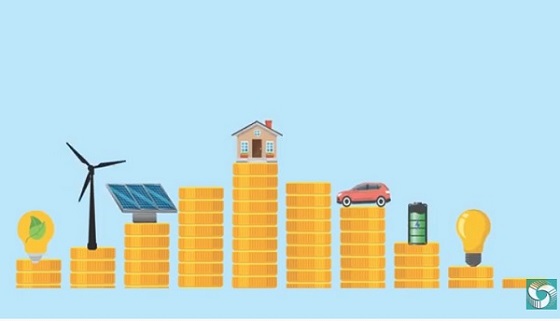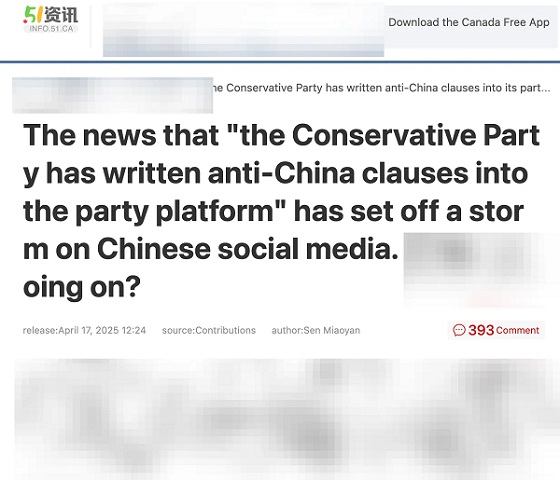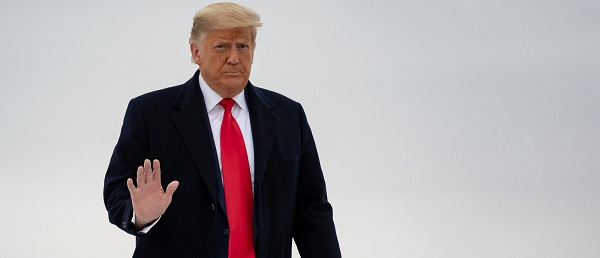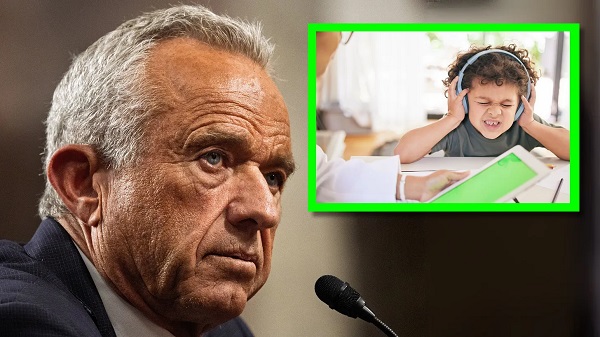Bruce Dowbiggin
MLB’s Exploding Chequebook: Parity Is Now For Suckers
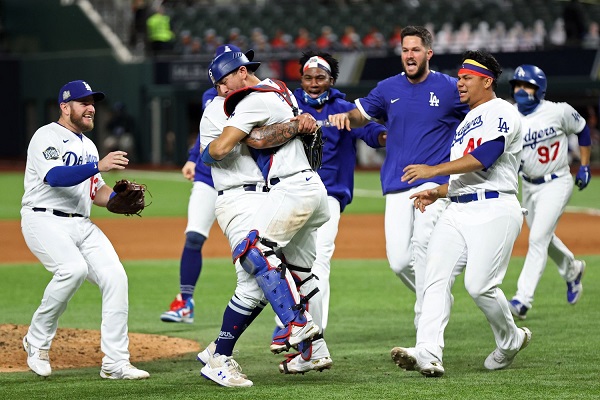
MLB has seen parity and proclaimed, “We don’t give a damn!” Okay, they didn’t say that. In fact they insist the opposite is true. They’re all about competition and smaller markets getting a shot at a title. But as the 2024 offseason spending shows, believe none of what you hear and half of what you see in MLB.
Here’s the skinny: Juan Soto‘s contract with the NY Mets — 15 years and guaranteeing $765 million, not a penny of which is deferred. Max Fried signed an eight-year, $218 million deal with the New York Yankees. Later, Nathan Eovaldi secured a three-year, $75 million contract to return to the Texas Rangers. Blake Snell (five years, $182 million with the Los Angeles Dodgers) and Matthew Boyd (two years, $29 million with the Chicago Cubs) added to the splurge.
There’s one more thing that stands out. MLB has no trouble with the financial big boys in New York, Los Angles, Texas, Toronto, Atlanta and Chicago shelling out money no small market dare pay. In the MLB cheap seats, Tampa, Pittsburgh and Miami can’t send out quality players fast enough. But MLB is cool with that, too, as those paupers get a healthy slice of TV money.
So yes, they’re all about talking parity with their luxury tax system. But to keep the TV, digital, betting and marketing lucre flowing they have to have large media markets swinging the heaviest bats come postseason. The question is, do MLB fans care the way they used to about parity? It says here they don’t. More want to seed best-on-best more often. Which is brutal but refreshing.

Their sister leagues, married to draconian salary cap systems, are still pushing parity, even as they expand beyond recognition. In our 2004 book Money Players, legendary Boston Bruins coach/ GM Harry Sinden noted, “The problem with teams in the league, is that there were (then) 20 teams who all think they are going to win the Stanley Cup and they all are going to share it. But only one team is going to win it. The rest are chasing a rainbow.”
And that was before the expansion Vegas Golden Knights won a Cup within five years while the third-year Seattle Kraken made a run in those same 2023 playoffs. There are currently 32 teams in the league, each chasing Sinden’s rainbow of a Stanley Cup. That means 31 cranky fan bases every year. And 31 management teams trying to avoid getting fired.
Maybe we’ve reached peak franchise level? Uh, no. Not so long as salary-capped leagues can use the dream of parity to sell more franchises. As we wrote in October of 2023, “If you believe the innuendo coming from commissioner Gary Bettman there is a steady appetite for getting a piece of the NHL operation. “The best answer I can give you is that we have continuous expressions of interest from places like Houston, Atlanta, Quebec City, Salt Lake City, but expansion isn’t on the agenda.” In the next breath Bettman was predicting that any new teams will cost “A lot, a lot.”
Deputy commissioner Bill Daly echoed Bettman’s caution about a sudden expansion but added, ”Having said that, particularly with the success of the Vegas and Seattle expansions, there are more people who want to own professional hockey teams.” Translation: If the NHL can get a billion for a new team, the heck with competitive excellence, the clock might start ticking sooner. After all, small-market Ottawa just went for $950.”
It’s not just the expansion-obsessed NHL talking more teams. MLB is looking to add franchises. Abandoned Montreal is once more getting palpitations over rumours that the league wants to return to the city that lost its Expos in 2005. Recent reports indicate that while MLB might prefer Salt Lake City and Nashville it also feels it must right the wrong left when the Expos moved to Washington DC 19 years ago.

The city needs a new ballpark to replace disastrous Olympic Stadium. They’ll also need more than Tom Brady to fund the franchise fee and operating costs. And Quebec corporate support— always transitory in the Expos years— will need to be strong. But two more MLB franchises within five years is a lock.
While the NBA is mum on going past 30 teams it has not shut the door on expansion after seeing the NHL cashing in. Neither has the cash-generating monster known as the NFL where teams currently sell for over six billion US. The NFL is eyeing Europe for its next moves.
The question that has to be asked in this is, WTF, quality of competition? The more teams in a league the lower the chances of even getting to a semifinal series let alone a championship. Fans in cities starved for a championship— the NFL’s Detroit Lions or Cleveland Browns are entering their seventh decade without a title or the Toronto Maple Leafs title-less since 1967— know how corrosive it can be.
Getting to 34, 36, maybe 40 teams makes for a short-term score for owners, but it could leave leagues with an entire strata of loser teams that no one—least of all networks, carriers and advertisers—wants to see. Generations of fans will be like Canuck supporters, going their entire lives without a championship.

In addition, as we’ve argued in our 2018 book Cap In Hand: How Salary Caps Are Killing Pro Sports and How The Free Market Can Save Them, watering down the product with a lot of teams no one wants to watch nationally or globally seems counter productive. The move away from quality toward quantity serves only the gambling industry. But since when has Gary Bettman Truly cared about quality of the product? So long as he gets to say, “We have a trade to announce” at the Draft, he’s a happy guy.
When we published Cap In Hand we proposed a system like soccer with ranked divisions using promotion and relegation to ensure competition, not parity. Most of the interviewers we spoke to were skeptical of the idea. But as MLB steams closer to economic Darwinism our proposal is looking more credible every day. Play at the level you can afford. Or just watch Ted Lasso. Your choice.
Bruce Dowbiggin @dowbboy is the editor of Not The Public Broadcaster A two-time winner of the Gemini Award as Canada’s top television sports broadcaster, he’s a regular contributor to Sirius XM Canada Talks Ch. 167. His new book Deal With It: The Trades That Stunned The NHL And Changed hockey is now available on Amazon. Inexact Science: The Six Most Compelling Draft Years In NHL History, his previous book with his son Evan, was voted the seventh-best professional hockey book of all time by bookauthority.org . His 2004 book Money Players was voted sixth best on the same list, and is available via brucedowbigginbooks.ca.
2025 Federal Election
Trump Has Driven Canadians Crazy. This Is How Crazy.

“Liberalism is based on one central desire: to look cool in front of others in order to get love. Preaching tolerance makes you look cooler than saying something like, ‘Please lower my taxes.’”— Greg Gutfeld
Having lived 25 years in the West after 45+ years in the East we can now generalize on the state of the nation. In the West the attitude is to grasp the future. Not fear it. Accept risk and loss as partners. In the East the default sentiment is to fear the future. Think of every reason why it might fail.
Quebec fears losing its culture. Ontario fears losing its power. The Maritimes fear losing equalization money. Hence Danielle Smith and Doug Ford as contrasting symbols of leadership. But 2025 is something new.
Donald Trump’s unsparing assessments of modern Canada— “We don’t really want Canada to make cars for us, to put it bluntly. We want to make our own cars — and we’re now equipped to do that”— have exposed this fissure in the country. Is it him or is it us? Families and friendships are being destroyed by the response. As Canadians head to the polls it’s obvious that persuasion is not going to apply in this climate. Arguments are falling on deaf ears.
With a large segment of the population doubling down on a failed past it’s time to make an I-told-you list of the implications of letting Donald Trump scare you into voting for a re-run of the Liberal Party. Double this dread if the Liberals get a majority.
To those Boomers living off the equity in their paid-off homes, get ready to be taxed on the appreciation in your homes. While you cherish your stand-alone private residence, get ready for the neighbours to sell out to someone who will erect a six-storey, 36-unit condo on the property right next to you because “sustainable growth”.
Got someone under 50 in your life? The Carney Reflex is bad news. Adding debt and embracing the destructive Trudeau social positions is a killer for those looking to commit to a future in Canada. Should Poilievre lose the election and his seat expect a brain drain away from the failed state. And the prosperity they create to vacate as well.
To those who cherish free expression expect hate-speech laws like those in UK where police will arrest you in your homes for social-media comment hostile to the ruling Party. And even if you shut down your posts watch out for neighbours who will exploit snitch lines to get you out of the hood.

Buttressing the party line, Carney will restore CBC’s funding— and then some— to drown out any social media pointing out the indelicate facts about his Trudeau-sourced cabinet members. He’ll also keep propping up failing private media, preventing them from bankruptcy so long as they spew DEI 24/7/365.
For those who cried fake tears over the Rez school graves scandal, watch Liberals pass legislation that gives unelected leaders of indigenous communities veto power over development of Crown Lands. Expect the Liberals, trying to maintain the NDP vote they assumed this year, to resurrect the “genocide” label against Canadians and fly flags at half mast again.

If you hoped to get to the bottom of innumerable scandals on the Liberals watch— ranging from eco-theft to China infiltration— Carney will put the clamps on any inquiry. The steady stream of Canada’s wealth to third-world kleptocrats will become a flood.
To those who thought Mark Carney had cancelled the consumer carbon tax, prepare yourself to find out that he just reduced it and will come back full-throttle as soon as the Conservatives fire Pierre Poilievre. While Carney plays the Housing Saviour he will also use the Carbon Tax to make concrete and fertilizer way more expensive, thus boosting the cost of the 50,000 homes he will never build and farm land will go fallow.
With CPC out of the way, expect no significant moves to end Canada as the money laundering capital of the world, the global fentanyl hub, international home to organized crime heads and a reported 1 in 7,800 residents as members of organized crime.
Batten down the hatches as Carney’s Liberals use their mandate to maintain the immigration deluge, thereby destroying Canada’s support systems for health, infrastructure and burying western values.

Get set for all your fossil-fuelled vehicles and heating to be taxed into oblivion with the proceeds going to more bike lanes, clogged public transportation on unreliable electric vehicles. Expect listening to obnoxious Quebec politicians brag on their “clean” hydro power.
Speaking of vehicles, the Sheila Copps set mocked Poilievre’s vision of urban hell where cops tell you not to protect your goods in a home smash-and-grab or car-jacking. With police ceding the field to organized gangs it will be open season as courts and the Liberals abandon the middle class to obey DEI imperatives.
And most of all, welcome to a full-fledged constitutional crisis sparked by Alberta and Quebec that will make the 1980s federal/ provincial rumbles look like Sunday school. Both will seek referendums from their voters on sovereignty or some equivalent. As we suggested last month the best case could be the UK model of regional parliaments. Saskatchewan and Alberta could join with indigenous communities to demand a regional say on how their revenues are distributed. Expect purchased media to humble brag for the ruling Liberals.

The worst outcome of Carney as PM is Alberta gaining independence or, gasp, joining America. Because Quebec can never get a better deal outside Canada expect them to use any momentum on sovereignty to extort further concessions from what’s left of Canada.
But why believe us? According to the report released in early 2025 by Policy Horizons Canada — the Government of Canada’s in-house think tank— upward social mobility could become a relic of the past, with wealth and opportunity increasingly inherited rather than earned. Their scenario outlines a country where rising inequality, inaccessible housing, and a broken promise of meritocracy leave younger generations disillusioned, disconnected, and doubtful that effort alone can improve their lives.
So with scant days left in the campaign the problem for Conservatives is not that the Liberal base believes Carney and their heroes. They’ve seen enough to know Mr. Burns is a fraud. But with their #TDS the true believers will never admit to backing a lying, losing hype train. That would be like death to them. So they’re closing their eyes and hoping it will all be over soon and they can go back to Mr. Dressup. Just know their kids will never forgive them.
Bruce Dowbiggin @dowbboy is the editor of Not The Public Broadcaster A two-time winner of the Gemini Award as Canada’s top television sports broadcaster. His new book Deal With It: The Trades That Stunned The NHL And Changed Hockey is now available on Amazon. Inexact Science: The Six Most Compelling Draft Years In NHL History, his previous book with his son Evan, was voted the seventh-best professional hockey book of all time by bookauthority.org. You can see all his books at brucedowbigginbooks.ca.
2025 Federal Election
How Canada’s Mainstream Media Lost the Public Trust

Breaking: CBC News admits that host Rosemary Barton was wrong on April 16 when she said “remains of indigenous children” have been discovered.
Call it the Panic Election. From The Handmaid’s Tale to Quebec alienation to plastic straws, the dynamic is citizens being stampeded in a brief six weeks by Big Brother. (There’s no Big Sister. That would mess with the narrative.) Prompting Covid Part Deux from the Laurentian media scolds.
Nowhere is this panic more keen than among aging Boomers who’ve pronounced themselves willing to ignore a decade of Justin Trudeau’s clumsy, unethical and sometimes criminal behaviour in the wake of Big Bad Trump. Even the threat of losing the country’s AAA credit rating can’t sway them from full-throated panic about being the 51st state.
The 51st state gambit is the window dressing. The real Trump panic is over him exposing the inadequacies of a Canadian society penetrated by China, dominated by globalist fanatics and more indebted every day. Specifically, Trump labelled Canadians defence dead-beats and entitled snobs who’d be crazy not to join the U.S. The insulting Trump framing has been a lifeline to those most recently in office— Liberals— to point at the Big Bad Wolf outside the door rather than the Frozen Venezuela inside its walls.
Integral to this panic is the role of Canada’s legacy media, a self-serving caste saved from bankruptcy (for now) by generous wads of public money. The 416/613 bubble ponies operate as if it were still 1985, not 2025. They’ve managed to preserve their status while society changed around them. For instance, CBC’s flagship At Issue panel features three people from Toronto and a fourth from Montreal.
It has worked perfectly in Boomer Canada. Until this past week, when the media guardians finally lost the plot. The combination of TV panel hubris and the incompetence of the Elections Commission exposed an industry more interesting in protecting its own turf than protecting the truth.
The meltdown was the notion that conservative social media— with its intrusive reporters and tabloid tactics— had no place in their sandbox. This hissy fit came after Wednesday’s French debate. Members of Rebel News, True North and other outfits dominated the party leaders’ scrums with obtrusive questions about Mark Carney’s opinions on same-sex sports and what constitutes a woman— questions the French moderator had neglected to ask.

For legacy reporters and hosts who take it as given that they be allowed the front pew this was an affront to their status. As purveyors of the one true political religion the talking heads on CBC, CTV and Global began speaking of “so-called journalists” and “far-right” intruders elbowing into their territory. Their resentment was all-consuming.
This resentment spilled into Debate Night Two when a shouting match ensued in the press room. A CBC source claimed (incorrectly) that Rebel Media leader Ezra Levant had been barred from the press room. A writer from the Hill Times screamed at members of their raucous rivals. The carefully chose panelists suggested that these outfits were funded by dark right-wing sources.
Before the debate had ended Elections Commission organizers— reportedly goaded by the Liberals— called off the post-debate scrum citing “safety” issues that seemingly included a Rebel reporter conducting a hostile walking interview with a furious Liberal official. This unleashed another torrent of Media Party vitriol about its position as the keepers of Canadian journalism.

In a show of irony, these complaints about right-wing misinformation came from people whose livelihood is dependent on Liberal slush funds or whose organizations have accepted government funds to stave off bankruptcy or whose union is an active shill for non-Conservative parties. The conflicts are never mentioned in the unctuous festival of privilege.
What makes this rearguard action against new media risible was the 2024 U.S. election where Donald Trump acknowledged the new day and rode the support of non-traditional media back to the presidency. His shunning of the legacy networks and hallowed print brands heralded a new reality in American elections. Poilievre has struggled to find this community in Canada, but for those with eyes it remains the future of disseminating political thought.
A perfect example of alternative media scooping the tenured mob on Parliament Hill has been the sterling work on China by Sam Cooper, a former Global employee who has independently demonstrated the ties between Chinese criminal gangs and the Canadian political structure going back to the 1980s. Working with others outside the grid he’s shown the scandal of a Liberal candidate urging Chinese Canadian voters to reap a bounty for turning his Conservative opponent to the Chinese Communist Party. A disgrace that Carney has forgiven.
Predictably Cooper’s work and the independent story by two retired RCMP investigators who implicated nine Liberal cabinet members in compliance with the Chinese communists has gotten the ‘tish-tish” from the Laurentian elites. Like the Democrats who buried the Hunter Biden laptop story to save his father in the dying days of the 2020 U.S. election the poodle media hope to delay the truths about China long enough to get the compliant Carney over the finish line.
For contrast to how it was— and could be— one only had to witness the moderator performance of journalist Steve Paikin of TVO. Largely unknown outside Ontario, Paikin overcame the skepticism of Westerners by playing it straight down the middle. Such was his honest-broker performance that Poilievre was heard telling him after the debate that he had no idea how Paikin might vote. (Ed. note: Paikin is a former colleague and longtime friend.) In other words, it’s still possible.
It’s a cliché that this election is a hinge point for Canada. Will it face itself in the mirror or indulge in more denialism about its true self? No wonder unaffiliated journalists joke that their stories today will be the lead on mainstream media in three months. Carney has promised to continue bribing the mainstream media, but their day is done. It’s simply a matter of fixing a date for the next panic.
Bruce Dowbiggin @dowbboy is the editor of Not The Public Broadcaster A two-time winner of the Gemini Award as Canada’s top television sports broadcaster. His new book Deal With It: The Trades That Stunned The NHL And Changed Hockey is now available on Amazon. Inexact Science: The Six Most Compelling Draft Years In NHL History, his previous book with his son Evan, was voted the seventh-best professional hockey book of all time by bookauthority.org. You can see all his books at brucedowbigginbooks.ca.
-

 2025 Federal Election11 hours ago
2025 Federal Election11 hours agoStudy links B.C.’s drug policies to more overdoses, but researchers urge caution
-
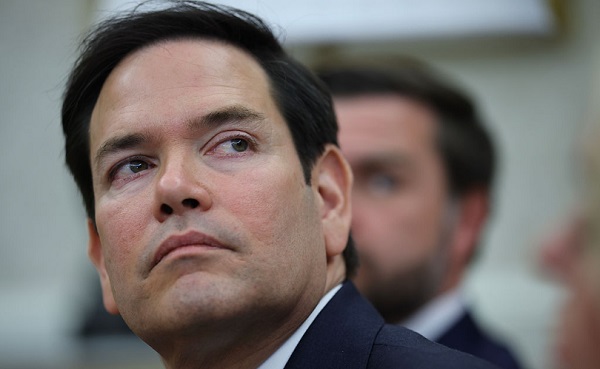
 conflict1 day ago
conflict1 day agoMarco Rubio says US could soon ‘move on’ from Ukraine conflict: ‘This is not our war’
-

 Business1 day ago
Business1 day agoChinese firm unveils palm-based biometric ID payments, sparking fresh privacy concerns
-

 2025 Federal Election2 days ago
2025 Federal Election2 days agoMark Carney Wants You to Forget He Clearly Opposes the Development and Export of Canada’s Natural Resources
-

 2025 Federal Election1 day ago
2025 Federal Election1 day agoPolice Associations Endorse Conservatives. Poilievre Will Shut Down Tent Cities
-

 Alberta1 day ago
Alberta1 day agoRed Deer Justice Centre Grand Opening: Building access to justice for Albertans
-
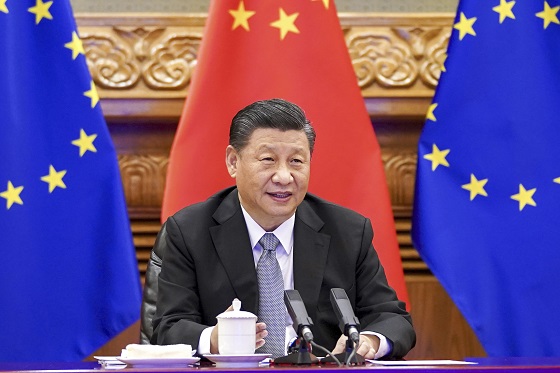
 Business1 day ago
Business1 day agoTrump: China’s tariffs to “come down substantially” after negotiations with Xi
-
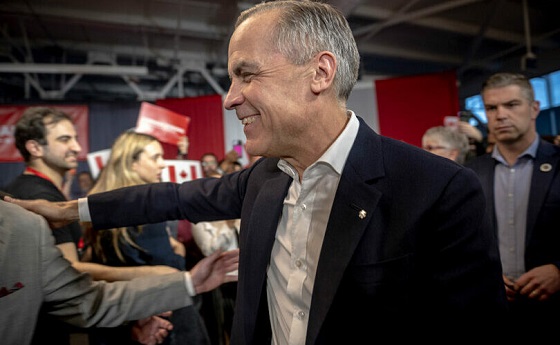
 2025 Federal Election1 day ago
2025 Federal Election1 day agoFormer WEF insider accuses Mark Carney of using fear tactics to usher globalism into Canada


